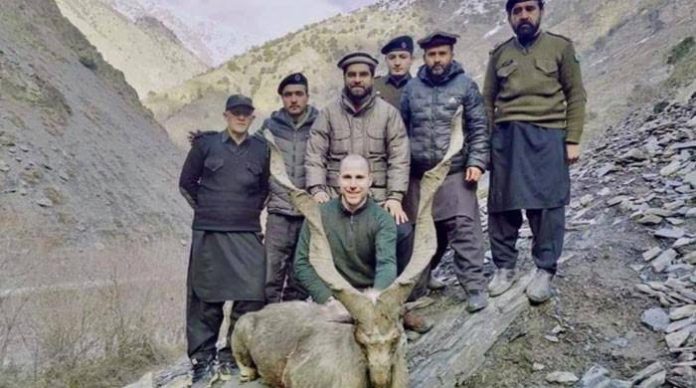The recent hunting of a Kashmiri Markhor by a US citizen in the Gahirat-Golen community game reserve highlights the complex dynamics surrounding wildlife conservation, trophy hunting, and community involvement in Pakistan’s efforts to protect endangered species.
Firstly, trophy hunting, despite its controversial nature, has been utilized as a conservation tool in some regions. In Pakistan, the issuance of a limited number of trophy hunting permits for species like the Kashmiri Markhor aims to generate revenue for local communities while simultaneously incentivizing conservation efforts. The significant amounts paid for these permits contribute substantially to local economies and conservation programs, such as habitat protection and anti-poaching measures.
Furthermore, community-based conservation initiatives have played a crucial role in the recovery of species like the Kashmiri Markhor. By involving local communities in wildlife management and providing them with a stake in the conservation outcomes, these programs foster a sense of ownership and responsibility among residents. As a result, the Markhor population has been steadily increasing in recent years, indicating the effectiveness of such collaborative efforts.
However, the practice of trophy hunting remains contentious due to ethical, moral, and ecological concerns. Critics argue that it promotes the commodification of wildlife and prioritizes the interests of wealthy hunters over the intrinsic value of species and ecosystems. Additionally, ensuring that trophy hunting activities are sustainable and do not harm overall population viability requires robust monitoring and regulation, which may not always be feasible in resource-limited settings.
Moreover, while trophy hunting generates revenue for local communities, questions persist regarding the equitable distribution of benefits and the extent to which these funds are reinvested in conservation efforts. Transparency and accountability in revenue management are essential to ensure that conservation goals are met and that local communities derive lasting benefits from wildlife-related activities.
The hunting of a Kashmiri Markhor by a US citizen underscores the complex interplay between conservation, community empowerment, and trophy hunting in Pakistan. While controversial, well-regulated trophy hunting programs can contribute to biodiversity conservation and socio-economic development, provided they are implemented ethically, transparently, and with a long-term perspective.


